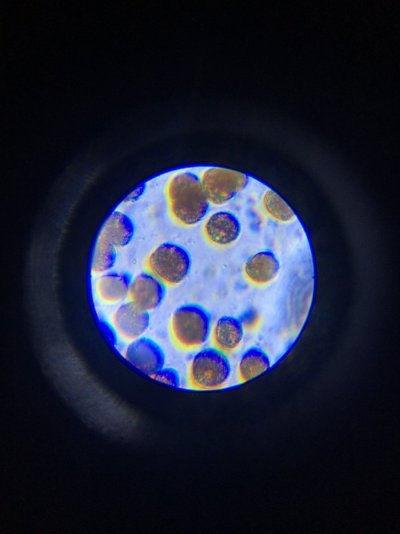Hi all,
I got a microscope and took some samples of what I'm afraid is Dinos. Looking through other ID threads I'm guessing this is Coolia (very spherical shape), but I would love a confirmation! Taking the photos with my phone was challenging, I know they aren't the best quality, but good enough for an ID maybe? TIA

I got a microscope and took some samples of what I'm afraid is Dinos. Looking through other ID threads I'm guessing this is Coolia (very spherical shape), but I would love a confirmation! Taking the photos with my phone was challenging, I know they aren't the best quality, but good enough for an ID maybe? TIA














